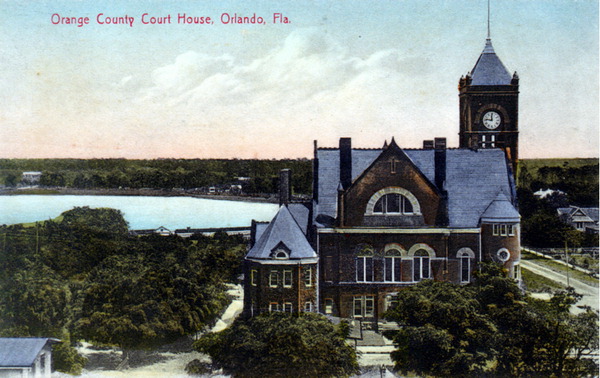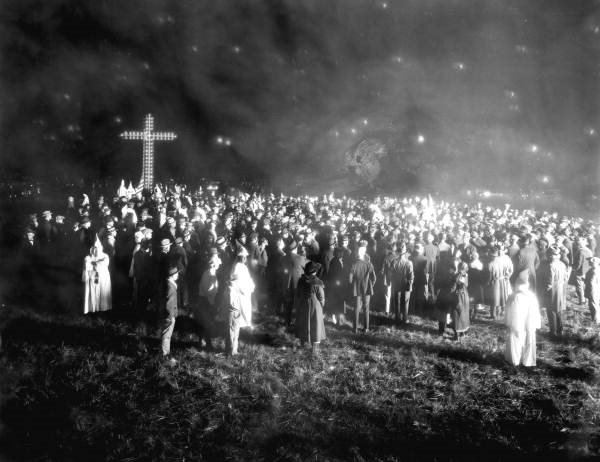Chapter 7: Investigations
The investigations that followed the Ocoee Massacre provided no new evidence about the violence, but they demonstrated the ways Whites and Blacks interpreted the events and acted on their perceptions. They also shaped the way Florida and the nation would interpret Ocoee for the next eighty years.
NAACP Investigation
Walter F. White (pictured right), Field Assistant Field Secretary for the the NAACP, arrived in Orlando on November 5, 1920 to investigate the violence at Ocoee. An experienced investigator, his light skin color enabled him to pass for White. He used a cover story that he was interested in purchasing land to facilitate his travel around the area and to pose questions to Whites. Those he interviewed included Republicans Judge John M. Cheney, former Orlando postmaster W.R. O’Neal, and attorney Alexander Ackerman, and Black Orlando physicians Dr. J.B. Callahan and Dr. W. H. Woodan, and Black ministers Rev. J.A. Long and Rev. H.K. Hill.
The NAACP report, which was subsequently in The Crisis, The New Republic, and the Clayton Monthly, was the most comprehensive coverage of the events. The NAACP submitted the report and supporting documents in their testimony before the hearings on apportionment before the U.S. House Committee on the Census in December 1920. The NAACP presented their evidence on Ocoee as part of their claims that qualified Black voters were denied access to the ballot. They called on the House to evoke Section 2b of the 14th Amendment to the U.S. Constitution and reduce the number of representatives from states such as Florida whose laws and actions denied the right to vote to Black citizens. The report and supporting materials also became part of the Bureau of Investigation’s inquiry on Ocoee and Jacksonville.
In addition to the information on Ocoee, the documents included a list of 942 Blacks from Jacksonville who had been denied the vote. Their names, addresses and voter registration numbers were listed.
Also included in the documents that informed the report was a letter from Alexander Akerman (pictured right), attorney in the Cheney law firm and future federal judge in the South Florida District Court (1929-1939). His father, Amos T. Akerman was U.S. Attorney General (1871) in the U.S. Grant administration and his son Alexander Akerman Jr. was a defense attorney for the Groveland Four. After the death of Judge Cheney, the Akerman Law firm moved to Miami, where it is today.
The letter addressed to Senator William C. [sic] Kenyon (R. Iowa) was dated November 6, 1920. The letter outlines the events surrounding the election and also illustrates the complexity of racial views even among those who championed Black voting rights.
Orange County Grand Jury Report
The Orange County Grand Jury met in November, 1920 and heard testimony from twenty Whites and one Black man, R. P. Neely. The witnesses were law enforcement officials, government officials, businessmen, and citrus growers. The report praised the actions of the members of Orlando Post, No. 9 American Legion in maintaining law and order.
The findings of the Grand Jury
“We find no evidence against anyone or any group of individuals as to who perpetrated the fatalities. In the death of the two white men, Elmer McDaniels and Lee Borgard, and the death of July Perry, a Negro, we accept the coroner’s verdict. We exonerate Perry’s widow and daughter, now in custody at Tampa, Fla., and recommend their release.”
The report concluded:
“We believe that Orange County citizens in producing immediate order out of chaos at Ocoee have maintained the honor of their county and State. Judgment and sanity, law and order, peacefulness and sobriety actuate the people of Orange County at all times and in the most trying circumstances and these people are determined that justice shall be done and that the prestige of the courts shall be increased to the highest possible standard, and that we go on record as being opposed to mob rule and deplore all semblance to lynch law but do firmly stand for law and order.”
N. P. Yowell, foreman
W. M. Glenn, Secretary
Copies of the Orange County Grand Jury report were inserted into the record of the hearings of the House Apportionment Committee and the House Committee on Rules (Ku Klux Klan hearings).
Bureau of Investigation (1920)
The Bureau of Investigation, the forerunner of the Federal Bureau of Investigation (FBI) also conducted an investigation at the request of the U.S. Attorney General A. Mitchell Palmer.
Agent A.V. French from the Bureau’s Jacksonville Office investigated and filed his report on December 4, 1920. For his report, he interviewed M.O. Overstreet, a banker in Orlando and Ocoee, and Joe Jones, Prosecuting Attorney for Orange County. He found a total of five deaths as the result of the actions in Ocoee: two Black women, one Black man, and two White men.
“Agent made diligent search and inquiry as to violation of the Election Laws and failed to find any one that would say any improper conduct at or near the Polls at Ocoee on November 2, 1920, other than that created by a colored man by the name of Mose Norman, who came up to the Polls and demanded to vote and was refused on the ground that he had not paid his poll tax and& registered.”
French found no evidence of a branch of the KKK in Ocoee. (In his Master’s thesis, future mayor of Ocoee Lester Dabbs claimed that the West Orange County Branch of the KKK was located in Winter Garden, and that it was the 3rd Branch established in Florida.)
Agent French concluded “From all information gathered by this Agent this entire trouble was due to the labor situation, which had unquestionably been brewing for months.”
“Investigative Reports of the Bureau of Investigation, 1908-1922,” National Archives and Records Administration, Washington, D.C.
Apportionment of Representatives: Hearings before the U.S. House Committee on the Census, 66th Congress, 3rd Session, Dec. 28, 29, 1920 Jan. 4-6, 1921.
When Walter White presented his report to the Committee representatives William Larson (Georgia) and Carlos Bee (Texas) took great offense, claiming that the NAACP had insulted the integrity of the their states. When White provided examples of official prevention of voting by qualified voters, they dismissed his allegations by claiming that those were actions by individuals and were not the result of the laws governing elections; they made their claims using racially insulting language until the chair of the committee intervened to return the hearings to testimony of White.
White’s reports and exhibits were compelling and he argued that “White supremacy is not threatened by a fair Federal election in the Southern United States, but one party will receive its death blow by an effective Federal election.” p. 30
House Committee on Lynching (1921)
Concerned about the spread of the Ku Klux Klan into northern states, congressional resolutions called for an investigation. The House Committee on Rules opened an investigation on October 11, 1921. The committee was charged with uncovering possible use of the U.S. mail to perpetrate fraud as well as activities by masked and unmasked men to disturb the peace and well-being of individuals and communities. As one committee member stated they were not concerned about what occurred behind the closed doors of lodges, but what members did in public in the name of the organization. Almost immediately references were made to “active and premeditated use of…premeditated terrorism…as happened last year at Ocoee and Jacksonville.” A summary of events, with several specific errors was also made.
This brief mention of Ocoee and Jacksonville apparently excited the Florida Congressmen Frank Clark and William Sears who felt compelled to interrupt the proceedings on the second afternoon to set the record straight. They introduced into the record the Orange County Grand Jury Report of 1920 and their own testimony from the Apportionment Committee Hearings. Most specifically, Sears wanted to make the point, as he had made it earlier that the violence “had nothing at all to do with the election.”





